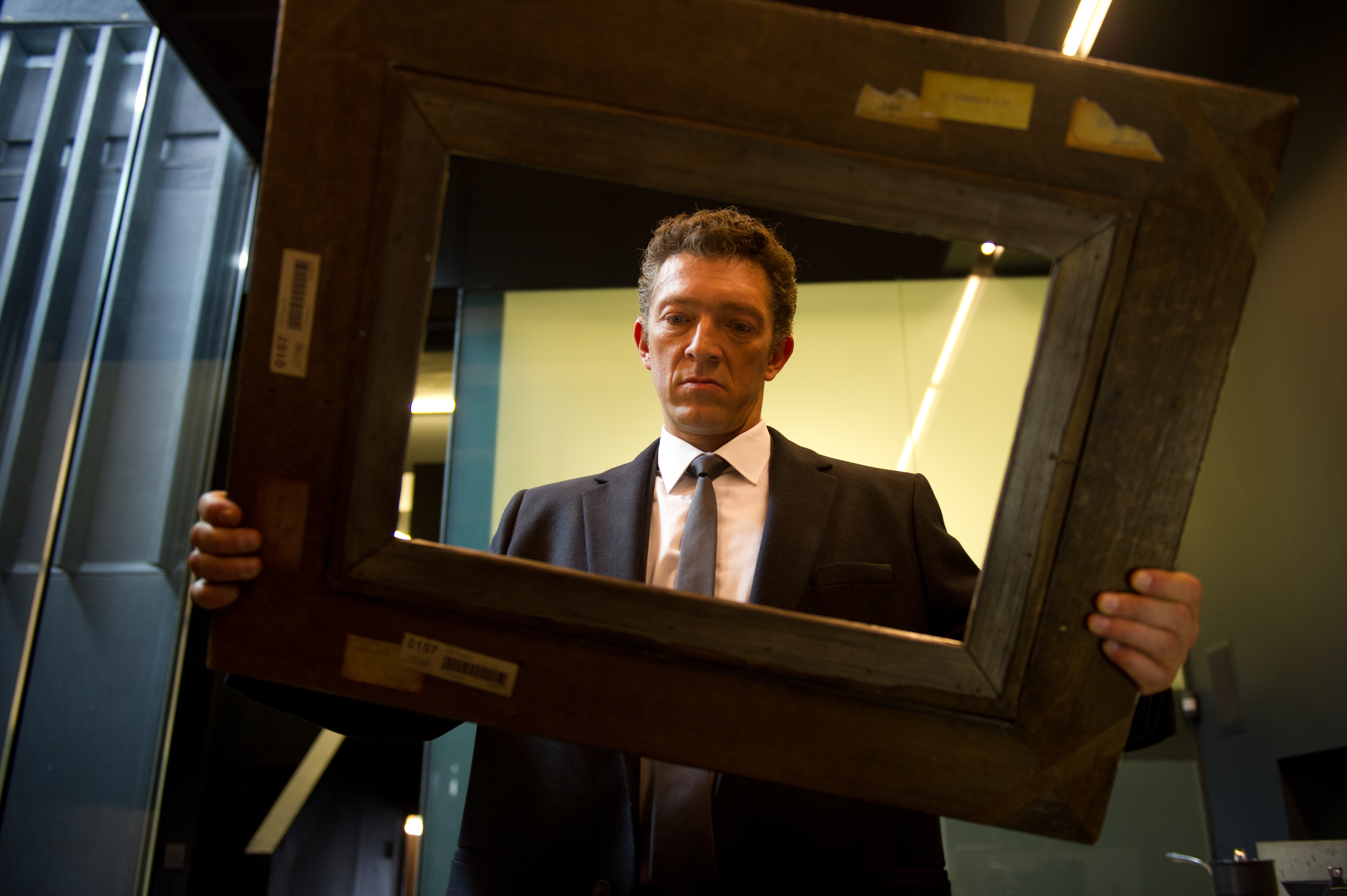Trance
This has been a hard review for me to write for two reasons. Firstly I was disappointed, and I really didn’t want to be. Secondly, Trance is one of those films where you don’t want to reveal much to someone who hasn’t seen it. It’s a ‘puzzle film’ that weaves and winds with MacGuffins aplenty and as such it would spoil the fun to tell someone exactly what happens. It’s pretty much safe to say the following:
The plot revolves around art auctioneer Simon Newton (James McAvoy) who decides to team up with criminal night-club owner Franck (Vincent Cassel) to steal a £25,000,000 Goya masterpiece (Witches on the Air) from his own auction house. Things start to go wrong when he suffers a concussion during the heist and forgets where he’s hidden the painting. After much physical torture Franck is finally convinced that Simon genuinely has amnesia and so they decide that the best course of action is for him to consult a hypnotherapist. He picks Elizabeth Lamb (Rosario Dawson) at random and from there on in the film becomes a maze of mind-games, duplicity and missing pieces.
Danny Boyle is a man who has conquered many genres: his debut Shallow Grave was a fantastic neo-Hitchcockian crime film; 28 Days Later, a classic (if unconventional) zombie flick; Sunshine a hugely underrated sci-fi. This film feels like something of a throwback, not to any classic genre, but more to Boyle’s own filmic career. The opening harks back to (in my opinion Boyle’s magnum opus) Trainspotting, with its thumping house soundtrack, direct audience address, and its bold humour. Later Boyle introduces Elizabeth Lamb using a montage sequence that recalls the initial scenes from Shallow Grave. It is a shame that these moments are where the film is at its most enjoyable.
{{ quote In the end it’s the folly of screenwriters John Hodge and Joe Ahearne that lets the film down and causing Trance to become a movie that messes with the audience as much as it messes with its characters. }}
As the film progresses it becomes dark… very dark. Indeed, this may be the most brutal and coldest film of Boyle’s career with moments of incredibly graphic violence and nudity. Unsurprisingly Cassel and Dawson are the stand-out performances, but the story is told in such a way that the audience can’t really get close enough to the characters. Unlike the majority of Boyle’s canon, the question of which characters we really care about lingers to the end and, plot-wise, the direction that McAvoy’s character takes in the latter part of the movie means that he was arguably miscast.
Visually, this is very chic film-making – Boyle and his cinematographer Anthony Dod Mantle have had a lot of fun with distortions and cameras in places you wouldn’t expect in order to capture a London of neon and metal. The disorientation approaches artistry, and Boyle and co manage not to push it to the point of annoyance. The action sequences are brilliantly thrilling and the film is packed with the director’s trademark bold images – one recurring motif is Simon knocking on glass (often shot as though he’s knocking on the cinema screen itself, prompting the audience to pay attention to the weaving plot). The film is also full of Art references: in one mesmerizing sequence of hypnosis, Simon mentally enters a church full of all the lost or stolen masterpieces from history in order to find the lost (or stolen?) memory of where he stashed the Goya.
In the end it’s the folly of screenwriters John Hodge and Joe Ahearne that lets the film down. It becomes a movie that messes with the audience as much as it messes with the characters. The numerous decoys aren’t there to throw you off; they all serve a purpose either within the plot or for the sake of character, acting like pieces in a mosaic, building the film using broken shards of memory and dream that form a twisted picture of betrayal and madness. The failure is the fact that they do throw you off and at the end you don’t feel like the film has been clever, you just feel like it’s held you at arm’s length, never letting you far enough in. The falsely satisfying ending ultimately leaves you with the sense that perhaps it tried to go in too many different directions.
Unfortunately I think the main problem may have been the amount of pressure that has been placed on the film. Danny Boyle’s name is on the tip of everyone’s tongue right now mostly due to the breath-taking Olympic opening ceremony Isles of Wonder, which was an absolute artistic masterpiece. Prior to that, he won an Academy award and found time to direct an incredibly well-received stage production of Frankenstein at The National. He was recently humble enough to turn down a knighthood which, if anything, made him even more of a national hero. Trance, which he made simultaneously whilst orchestrating Isles of Wonder (and within which he professed to have included all stuff that was “too dark for the Olympics”) provoked genuine excitement in me.
When the lights began to dim I was already on the edge of my seat and with the first thumping beats of the opening scene I had a big smile on my face. Mr Boyle clearly wanted to prove that he could be just as cheeky and have as much fun as he did when he made Shallow Grave – it’s just a shame that the smile had faded from my face by the end credits.
I can only hope that, a few years down the line, Trance will be worth revisiting.

Comments